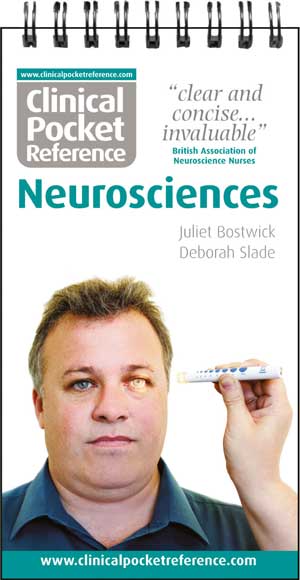From a nurse’s perspective, I would recommend this booklet as a handy reference guide to neurological aspects of nursing care. It is of a convenient size, to fit into uniform pockets. Its spiral binding and waterproofed card make it hard wearing and practical for use on a daily basis within the workplace.
The Pocket Reference will be ideal for nurses working in general hospital, general practice or community settings who encounter patients with neurological diseases (either as the patient’s primary diagnosis, or as a co-existing condition). Student nurses will find it a great introduction to Neuroscience Nursing, as would more experienced nurses moving into Neurology and Neurosurgery work for the first time.
The booklet provides an easy guide to neuroscience practice, divided into three sections. Section 1 gives an introduction to the nervous system including diagrams and definitions of the central and peripheral nervous systems, the motor and sensory pathways. Section 2 is a very comprehensive guide to neurological assessments explaining how to do and how to document. Section 3 introduces common neurological disorders by describing the conditions, explaining signs and symptoms, outlining possible investigations and possible treatment. Importantly, within this section, there are references to appropriate NICE guidelines and tips on where to go for more information.
The format is clear, logical and easy to read. Its brevity means that it will be most useful as a reference for general nurses and nurses new to the often complicated, field of Neuroscience. However, the guide’s referencing and bibliographies mean that it would also be a useful acquisition for more experienced nurses and other practitioners.
